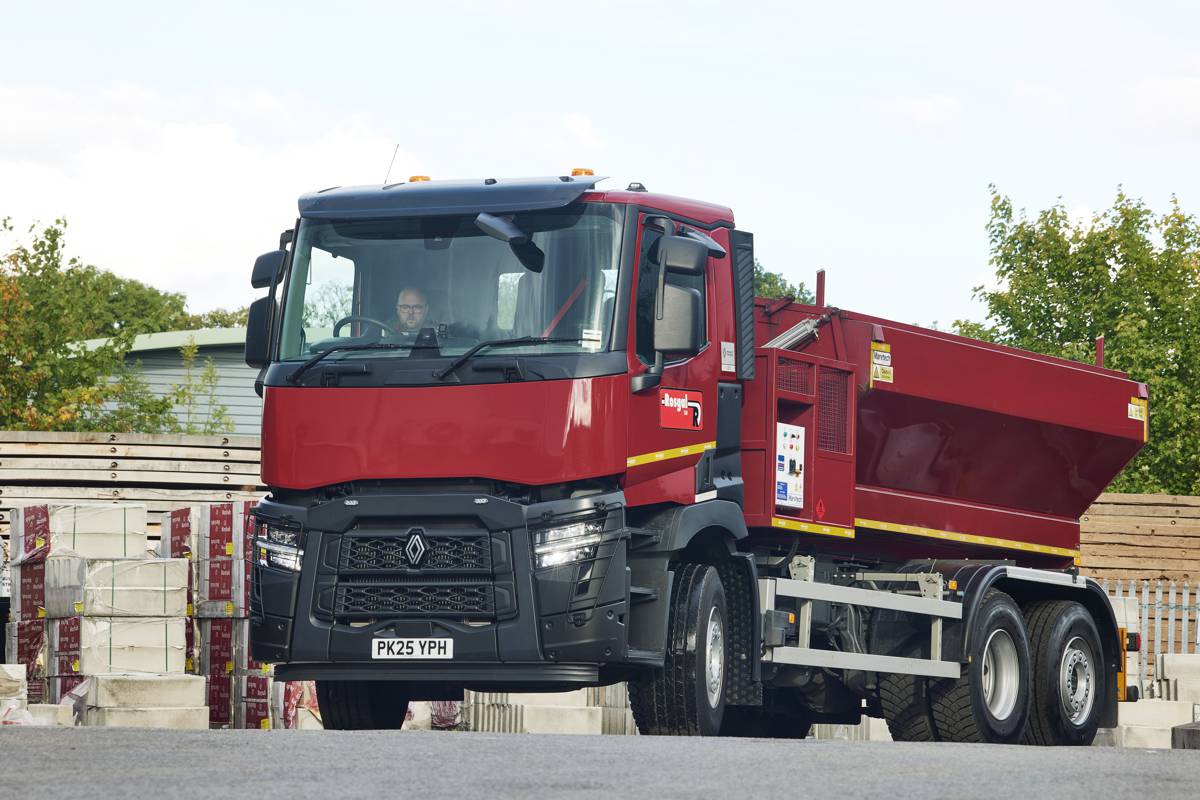Meet the all new Toyota Proace Electric Van
Toyota is launching its first zero emission, battery electric vehicle in the UK, the Proace Electric medium-duty panel van, adding a powerful new dimension to its Toyota Professional range of light commercial vehicles.
The new model signals the company’s commitment to applying different electrification technologies to meet different mobility requirements. With a generous driving range of up to 205 miles, Proace Electric gives customers access to the growing number of low and zero emission zones.
For business users working in urban areas, the extent of the driving range means daily recharging may not be necessary, minimising their vehicle’s downtime.
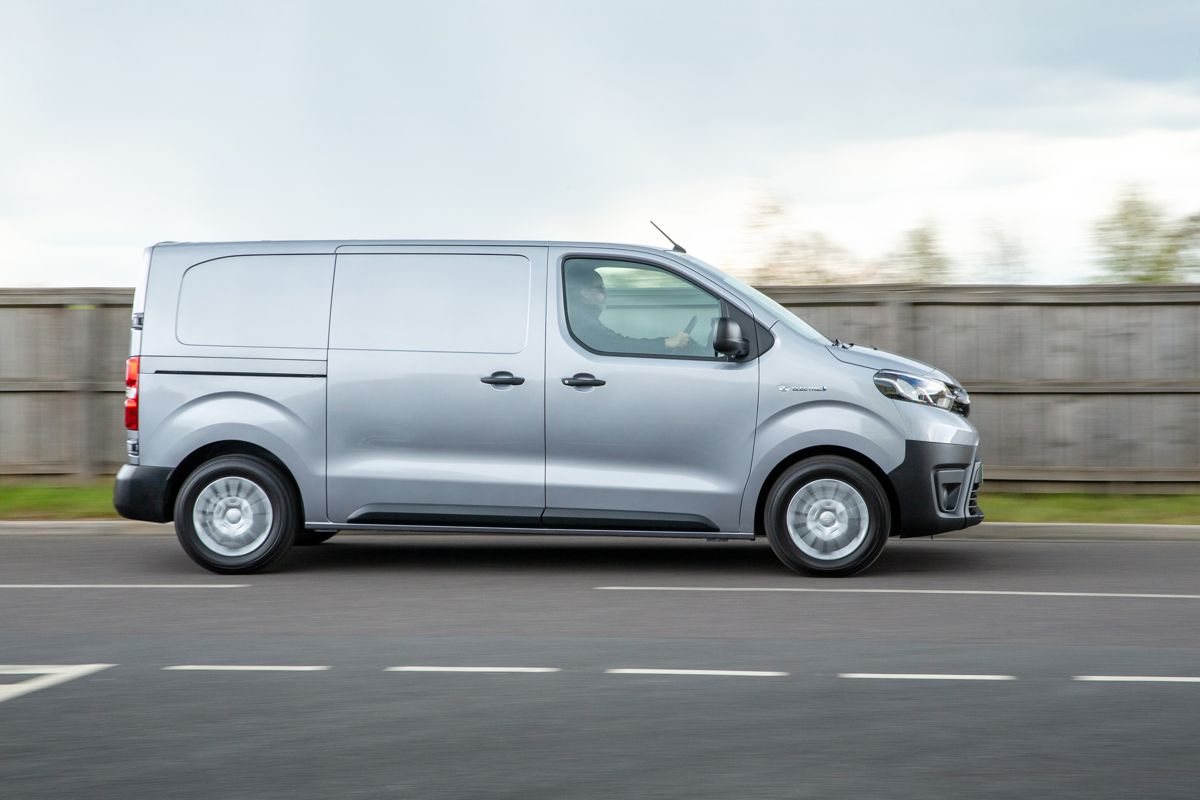
A new and growing market
- Toyota makes an early entry into the developing market for battery electric LCVs
- New model gives customers access to the increasing number of low and zero emission urban centres
- Matching best-in-class power, performance and charging speeds
- Introduction in the UK and selected European markets during first quarter of 2021
At present, alternative fuel vehicles (AFVs, including battery electric vehicles) account for only a fraction – around 1.8 per cent – of new LCV sales in the UK, but a number of factors are accelerating demand for practical alternatives to vans with conventional internal combustion engines. Low and zero emission zones are coming into force to reduce local pollution and improve air quality in urban centres, at the same time as rapid growth in e-commerce is generating more day-to-day delivery traffic.
Consumers are actively seeking cleaner forms of transport and large corporations are making electrified vehicles a requirement within their fleet tender processes. Customer interest is also increasing, as manufacturers bring more models to market and they become more visible on city streets.
Toyota is taking an early initiative with the introduction of Proace Electric. The new model not only rivals the best power, performance and charging requirements within its BEV segment, it goes further by delivering just the same quality and load-carrying practicality as its diesel-powered equivalent.
Key customer concerns have been addressed, including driving range (up to 205 miles), charging times (fast charging to 80 per cent in less than one hour with a 100kW fast charger) and battery quality (eight-year/100,000-mile battery warranty as standard). This makes Proace Electric a smart choice for customers who need to access low/zero emission zones, giving them the opportunity to develop new, cost-efficient business models that deliver environmental performance while maintaining service levels.
Proace Electric was introduced to initial European markets – Norway, Netherlands and Switzerland – in the fourth quarter of 2020. From the first quarter of 2021 it is being launched in the United Kingdom, Denmark, Finland, France, Germany, Italy, Spain and Sweden.

All-electric powertrain
- Choice of two lithium-ion batteries to suit customer requirements – 50kWh and 75kWh capacities
- Respective zero emission driving ranges of up to 142 and 205 miles, comfortably beyond the daily average of target customers, avoiding the need for daily recharging
- Fast charging (to 80 per cent charge) in less than an hour
- Battery quality and durability reflected in standard eight-year/100,000-mile battery warranty
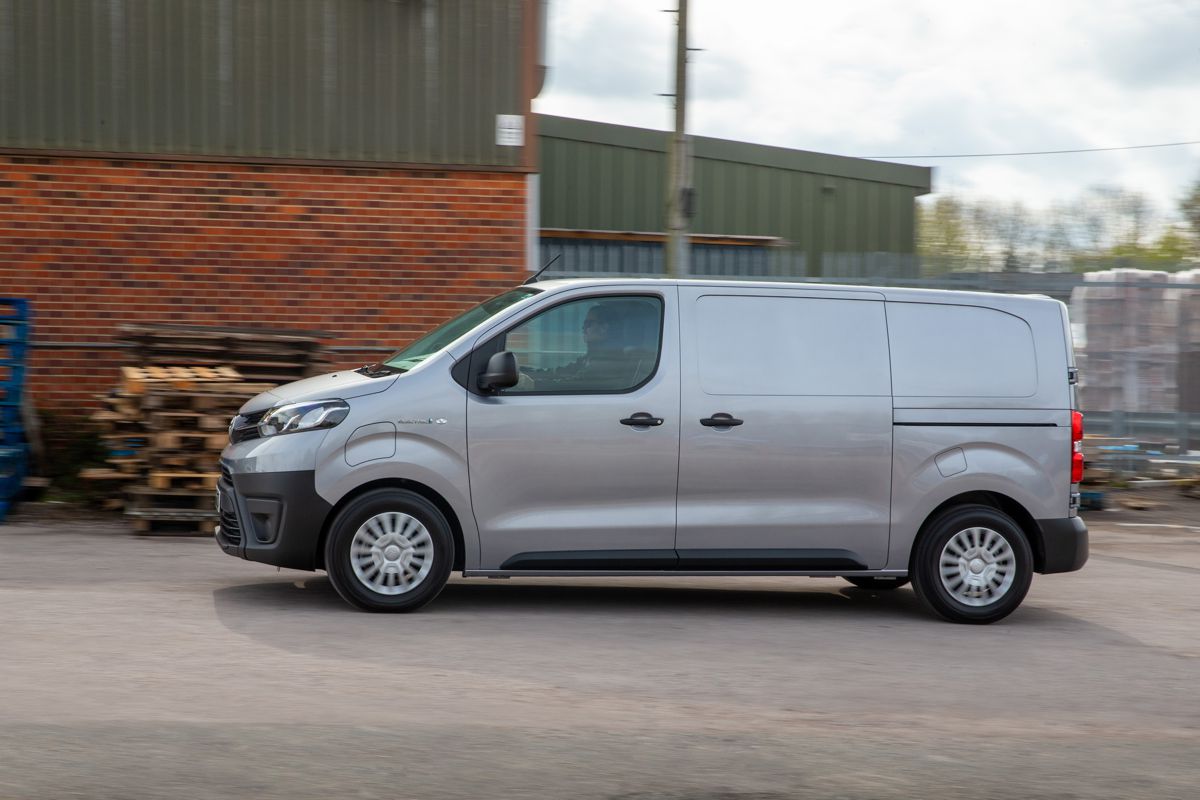
Choice of two battery pack options
Proace Electric can be specified with either of two lithium-ion battery packs, to suit different customer driving requirements. These power a front-mounted electric motor which drives the front wheels, giving smooth, quiet performance with zero emissions.
The smaller of the two is an 18-module 50kWh battery which weighs 383kg and gives a best-in-class driving range of up to 142 miles*. This will be ideal for customers making regular short urban journeys or organisations working across a large campus or industrial park.
The larger, 27-module unit has a 75kWh capacity and weighs 534kg. It gives the electric Proace models the ability to cover up to 205 miles* on a full charge, giving owners peace of mind when they have to make longer trips, or have a busy schedule between recharging opportunities.
Toyota researched the needs of its target customers in Europe (including UK van drivers) and found the majority typically covered only around 28 miles in a working day. The generous driving range provided by both battery options means that for most owners, the new Proace Electric will not require daily recharging, reducing the vehicle’s down time.
The driving range can be affected by a number of external factors, including the weather and temperature, the road type and quality, the driver’s driving style and the payload being carried.
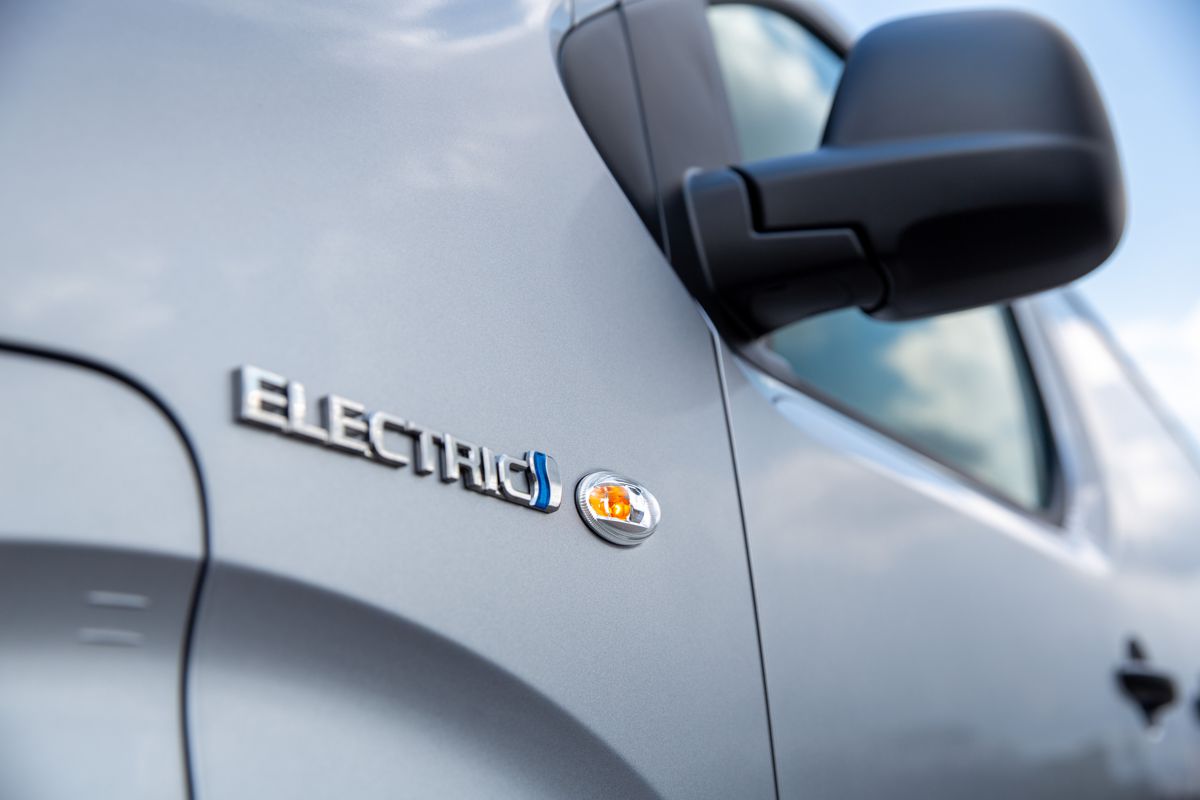
Responsive performance
Proace Electric has three driving modes, Eco, Normal and Power, selected using a centre console-mounted switch.
When driving in “Power” mode, maximum power output from both batteries is 134bhp/100kW with peak torque of 260Nm delivered from start-up. Top speed is electronically limited to 80mph and 0-62mph acceleration can be accomplished in 12.1 seconds with the 50kW battery, 13.3 seconds with the 75kW unit.
In Eco mode output is reduced to 81bhp/60kW with 190Nm of torque, while in Normal mode the electric system produces 108bhp/80kW with 210Nm.

Simple, secure and convenient charging options
Speed and ease of charging are important considerations for customers who need to minimise the amount of time their vehicle is off the road. Toyota has provided charging options for the Proace Electric, to suit different customer needs.
All models come with a 7.4kW single-phase onboard charger and a 6m Type 2 cable for connection to a home charging socket, plus a 7m Type 2 cable for connection to a 32A wallbox system. As an option, a faster 11kW tri-phased onboard charger can be specified.
The connection socket in the front left wing is compatible with public/third party fast-charging charge points.
Recharging time will vary according to power supply criteria in different markets, but a fast charging 100kW DC system will deliver an 80 per cent charge in around 32 minutes for the 50kW battery and 48 minutes for the 75kW battery.
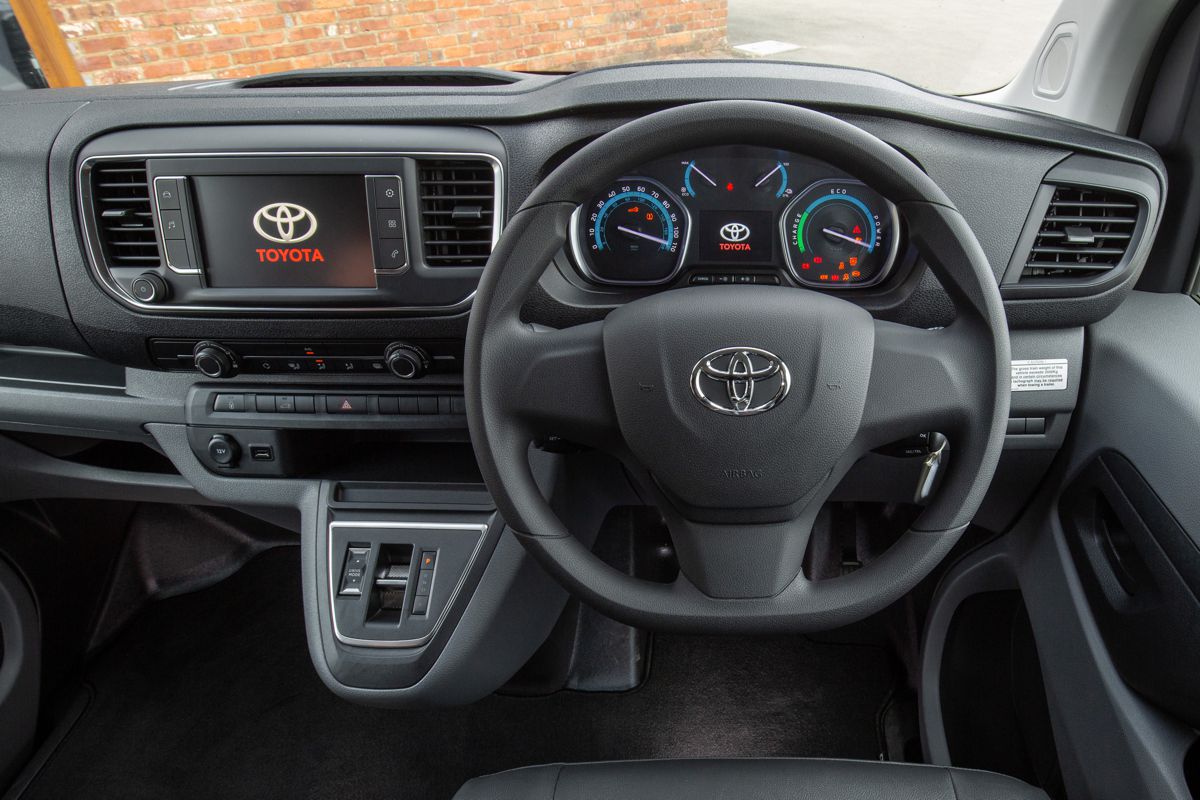
Battery warranty
Further customer peace of mind about the quality and durability of the battery is provided by an eight-year/100,000-mile manufacturer’s warranty.
In some markets, there is the option to extend this warranty further, linked to an annual battery health check as part of the scheduled servicing programme.
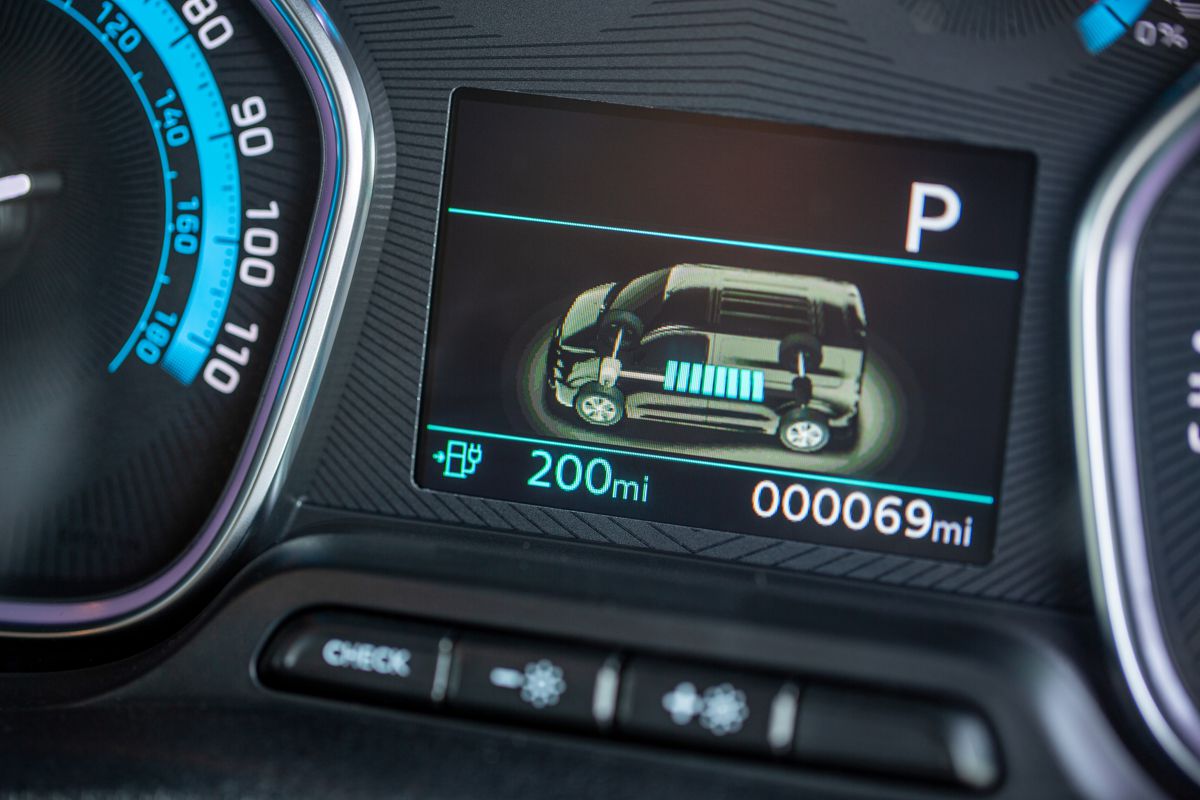
Uncompromised practicality
- Toyota’s first battery electric van provides a standard one tonne payload and towing capacity with the 75kW battery; payload increases to 1,266kg with the 50kW battery
- Available as a panel van in medium body length – the established best-selling format in the diesel Proace range
- EV-specific equipment specifications include e-toggle shift switch, drive mode selector, electronic parking brake, seven-inch display and smartphone integration (Apple CarPlay/Android Auto)
The new Proace Electric is launched in a single version in the UK, a panel van with a medium body length. This is in line with the market requirement, this style and size of van being established as the most popular within Toyota’s Proace diesel van range. With the battery located entirely beneath the vehicle floor, there is no impact on Proace’s load capacity, in any version. Moreover, this design adds to the vehicle’s stability and rigidity, contributing to stable and responsive performance. Similarly, payload and towing capacity are at best-in-class levels.
The Medium version is 4,959mm long and has a 3,275mm wheelbase. Fitted as standard the ingenious Smart Cargo system, the van has an overall load length extending to 3,674mm and a load capacity of 5.8m³ . The sliding side door openings are wide enough for standard size Euro pallets to be loaded.
Proace Electric equals the best models in its class with a one tonne payload. This increases to 1.266 tonnes on vans fitted with the lighter, 50kWh battery.
Towing capacity is also at a best-in-class level at one tonne (braked trailer, with up to 50 per cent payload inside the van). These capabilities reinforce the status of Proace Electric as a eminently practical choice for customers.
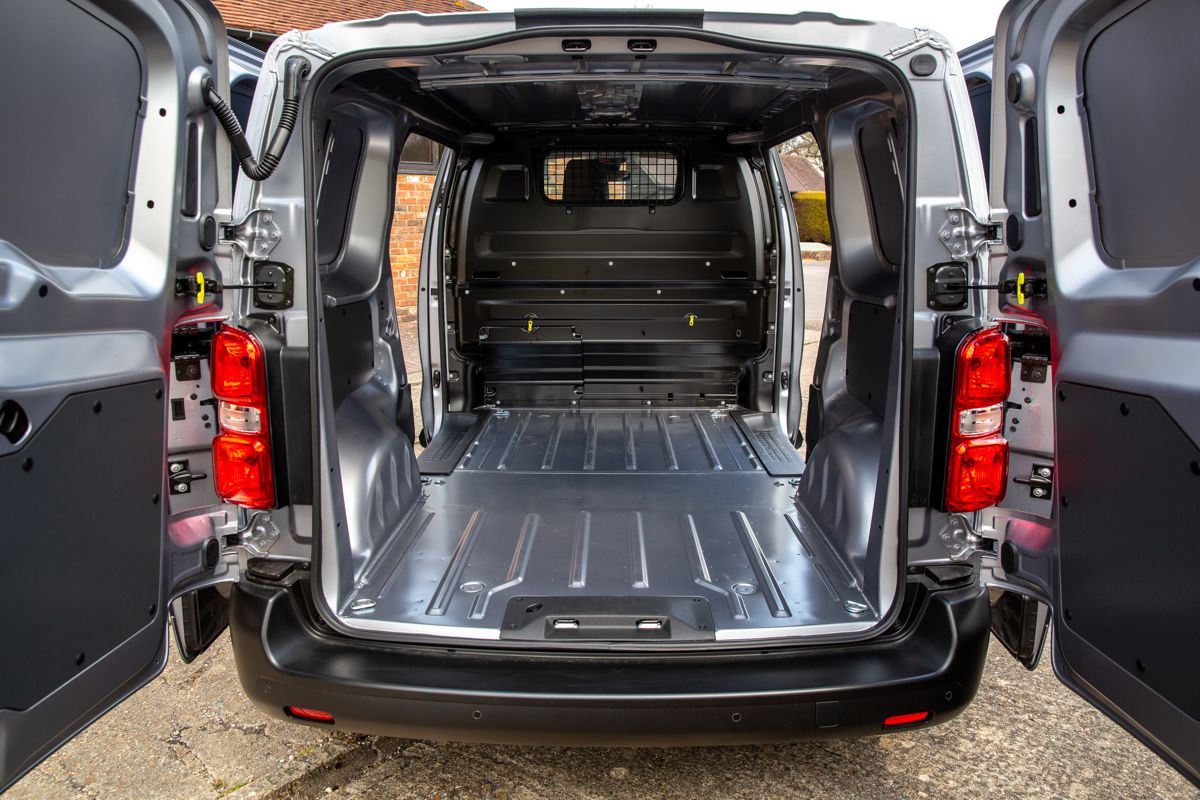
Equipment features
The new Proace Electric is available in a single model grade, Icon, providing a strong combination of practicality, safety and comfort features found in the conventionally powered range, together with a number of items specific to its all-electric status.
The specification includes manual air conditioning, automatic wipers and headlights, cruise control, electronic parking brake, rear parking sensors, power-adjustable heated, retracting door mirrors, a seven-inch touchscreen with display audio, colour multi-information display, DAB reception, Bluetooth, smartphone integration with Apple CarPlay and Android Auto, eCall and USB ports.
The driver’s seat has an arm rest and is height-adjustable and has adjustable lumbar support. The load area has two lights and a 12V power outlet, with a further power socket in the cabin.
EV-specific instrumentation
The driver’s instrument binnacle has been adapted to include dials and meters specific to the vehicle’s battery and electric motor performance. The arrangement includes an EV system indicator divided into Charge, Eco and Power sections, and an electricity consumption indicator, showing the draw on battery power from the cabin air conditioning system.
In the centre of the display a 3.5-inch colour multi-information display provides additional EV functions, including a real-time indication of energy flow, the level of battery charge and the remaining driving range.
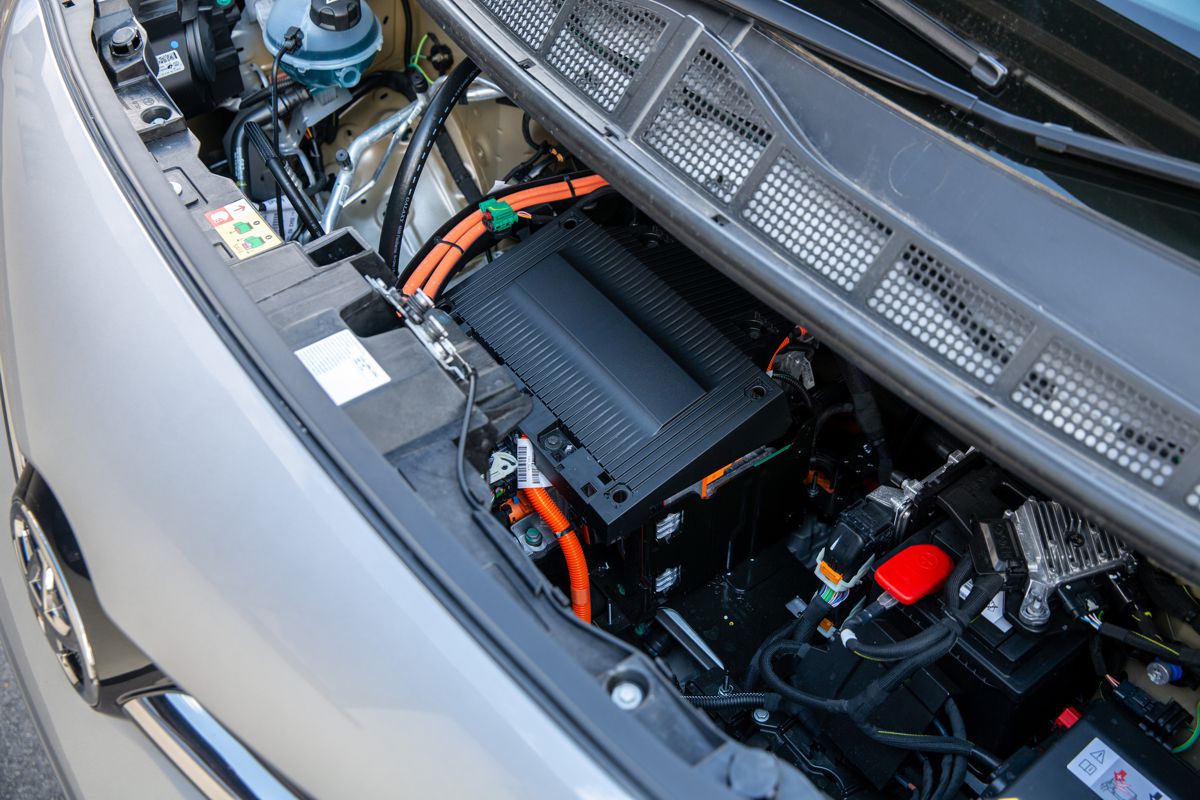
E-toggle and Drive Mode Selector
In place of a gear shift, the driver uses an e-toggle control on the centre console to engage Park and select Drive, Neutral and Reverse. There is also a “B” switch to activate additional regenerative braking each time the driver takes their foot off the accelerator pedal.
Different drive modes can be selected using a switch alongside the e-toggle. This lets the drive choose between Eco, Normal and Power modes to suit their preference and the driving conditions. In each mode, the level of power and torque is adjusted, detailed in the powertrain chapter above.
Electronic parking brake
The Proace Electric has an electronic parking brake as standard, operated using a switch mounted between the front seats.
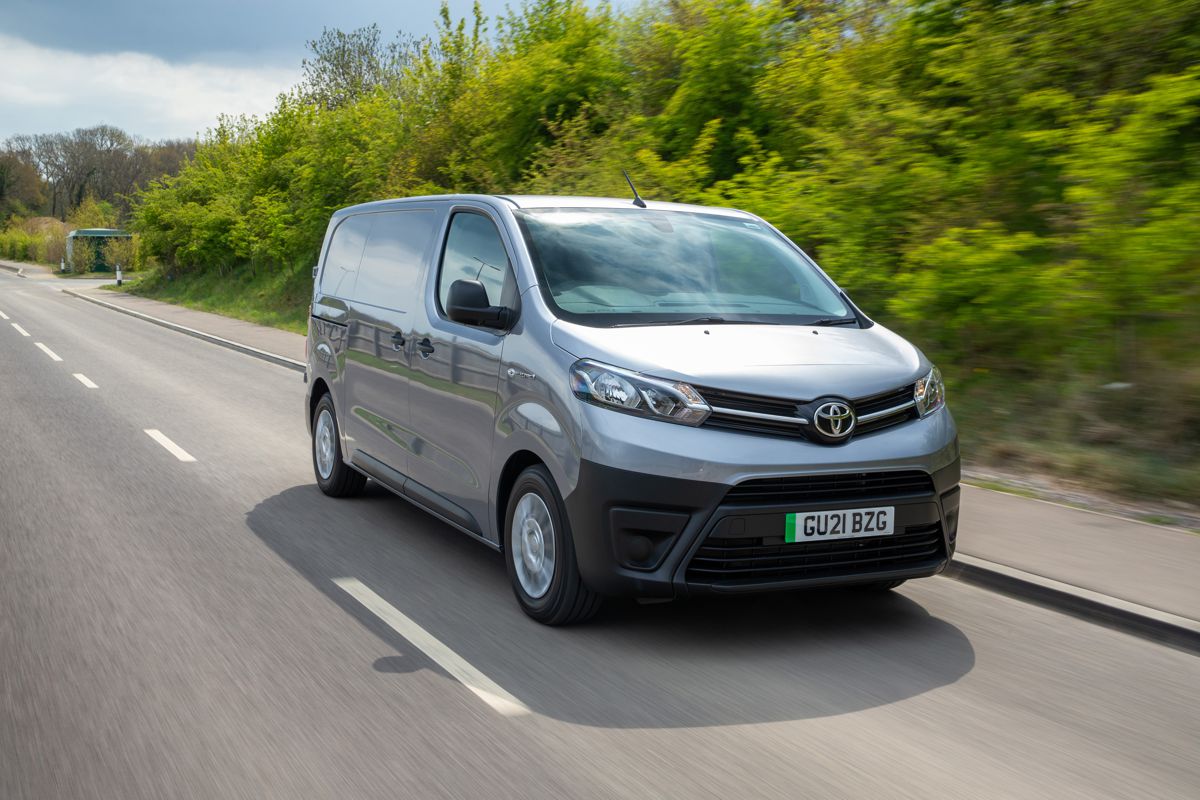
Charging point cover
The charging point is located on the vehicle’s front left wing, covered by a hinged flap. It features an indicator to the right of the socket that illuminates to show the charging status.
When no cable is attached, no light shows. With the cable plugged in, a white light indicates stand-by mode; flashing green shows charging in progress; and constant green indicates charging is complete. A blue light illuminates when a programmable charging function has been selected and a red light warns of an error or that the nozzle is still locked in place.
For convenience, the driver can use their remote key to disconnect the nozzle from the charging socket. The red indicator light will go out when the nozzle is unlocked; the cable must be removed within 30 seconds, after which the nozzle will re-lock.


















